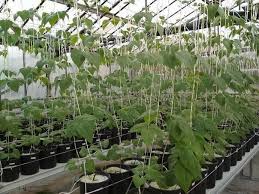Lima beans, known for their buttery texture and high nutritional value, are a staple in many diets. Traditionally grown in soil, these legumes are now making their way into a new frontier: hydroponics. The idea of growing hydroponic lima beans might sound unconventional, but it’s quickly gaining traction among home gardeners and commercial growers alike. This innovative method of cultivation offers numerous advantages, from faster growth to greater yield, all while conserving space and resources.
What Are Hydroponic Lima Beans?
Hydroponic lima beans are grown using a soil-free system where nutrient-rich water is circulated directly to the plant roots. Instead of drawing nutrients from the soil, the plants absorb minerals and oxygen from the water, allowing for precise control over the growing environment. This method is particularly effective for lima beans, which can thrive in controlled hydroponic setups with the right care and attention.
Advantages of Growing Lima Beans Hydroponically
One of the most significant benefits of hydroponic gardening is the efficiency of the system. Hydroponics allows for:
- Faster Growth: Lima beans grown hydroponically often reach maturity quicker than their soil-grown counterparts. With nutrients readily available and no need to expend energy searching through soil, the plants focus on growth and production.
- Year-Round Cultivation: Since hydroponics can be done indoors or in greenhouses, lima beans can be grown regardless of the season. This is ideal for regions with short growing seasons or harsh climates.
- Water Conservation: Hydroponic systems use significantly less water than traditional soil-based methods because they recirculate water instead of letting it drain away.
- Pest and Disease Control: Without soil, many common plant diseases and pests are minimized, leading to healthier plants and reduced need for pesticides.
Best Hydroponic Systems for Lima Beans
While there are several hydroponic systems available, not all are ideal for growing lima beans. Due to their relatively large root systems and vining growth habit, deep water culture (DWC), nutrient film technique (NFT), and ebb and flow systems are among the most effective.
- Deep Water Culture (DWC): This system suspends the plants in a nutrient-rich solution with their roots submerged directly in water. It’s simple and cost-effective, making it a good choice for beginners.
- Ebb and Flow (Flood and Drain): This system periodically floods the root zone with nutrients and then drains it, providing both hydration and oxygen to the roots. It supports the larger size of mature lima bean plants well.
- Trellis Support: Since lima beans are vining plants, they need vertical support. A trellis system is essential in hydroponic setups to guide plant growth and maximize space.
Nutrient Requirements and Care
Lima beans in hydroponics require a balanced nutrient solution rich in nitrogen, phosphorus, potassium, and micronutrients such as calcium, magnesium, and iron. The pH level should be maintained between 6.0 and 6.5 for optimal nutrient absorption.
Proper lighting is also crucial. If growing indoors, full-spectrum LED grow lights will ensure the plants receive enough light for photosynthesis and development. Keep the temperature between 70–85°F during the day and slightly cooler at night to simulate natural conditions.
Pollination is another important aspect to consider. Since there are no wind or insects in an indoor hydroponic system, growers may need to hand-pollinate flowers using a soft brush or by gently shaking the plants.
Harvesting and Yield
Hydroponic lima beans typically begin to flower within 45–60 days, with pods ready for harvest a few weeks later. Regular harvesting encourages further production. Expect multiple harvests over the growing period, especially in a well-maintained system.
A Sustainable Option
Hydroponic lima bean cultivation is not only efficient but also environmentally friendly. It reduces the need for chemical fertilizers and herbicides, minimizes land use, and can even be powered by renewable energy sources. For urban farmers or those with limited space, hydroponics offers a viable path to self-sufficiency and fresh, homegrown produce.
If you’re interested in getting started with hydroponics or looking for supplies tailored to your needs, check out rochesterhydroponics.net for a wide range of products and helpful resources.
In conclusion, hydroponic lima beans represent an exciting development in the world of agriculture. Whether you’re a hobbyist or an entrepreneur, this sustainable approach to growing legumes can yield rewarding results both in taste and productivity.
